Meet Raquel Bryant, Geology And Geophysics Postdoctoral Research Associate
Dr. Raquel Bryant is one of the first recipients of the Geosciences Future Faculty (GFF) Postdoctoral Fellowship.
May 21, 2021
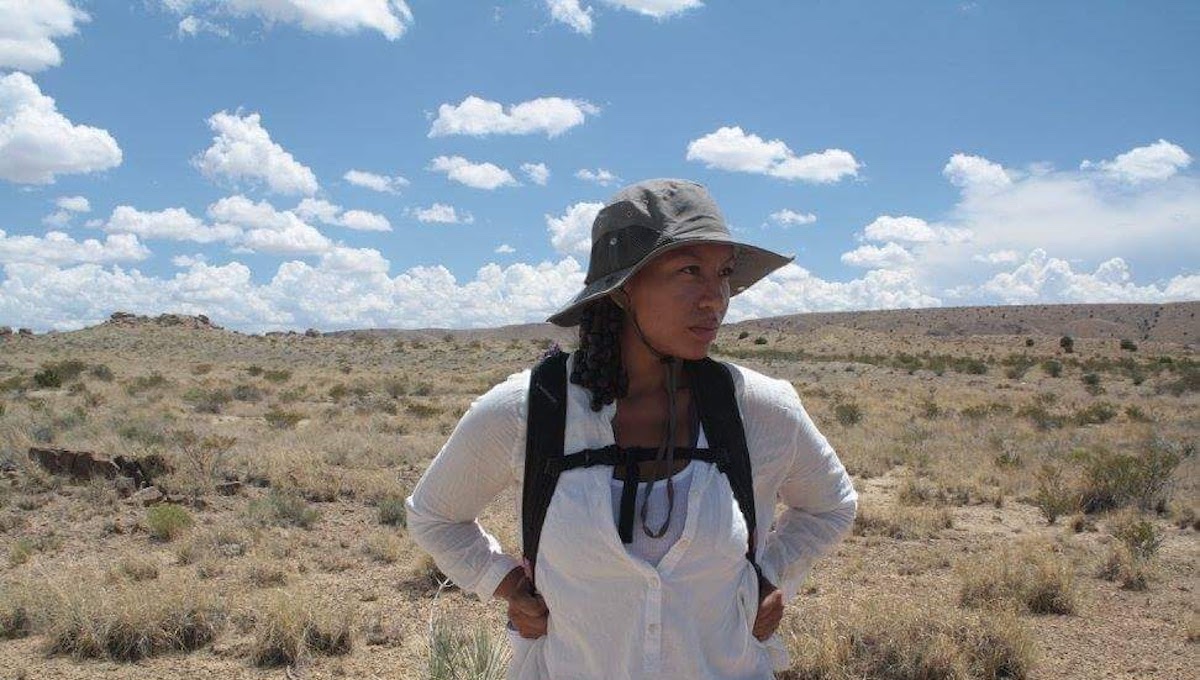
Dr. Bryant in the field, conducting research in Socorro County, New Mexico. (Photo courtesy of Dr. Bryant.)
Through the recently established Geosciences Future Faculty Fellow Program, Dr. Raquel Bryant is a postdoctoral research associate in Texas A&M University’s Department of Geology and Geophysics.
Bryant has a research background in Cretaceous paleoceanography and micropaleontology, and specializes in the study of fossil foraminifera, marine protists, and ancient environments. Working with Dr. Christina Belanger, Bryant’s current research focuses on analyzing past marine environments by building datasets of micropaleontological data and by integrating microfossil and geochemical records.
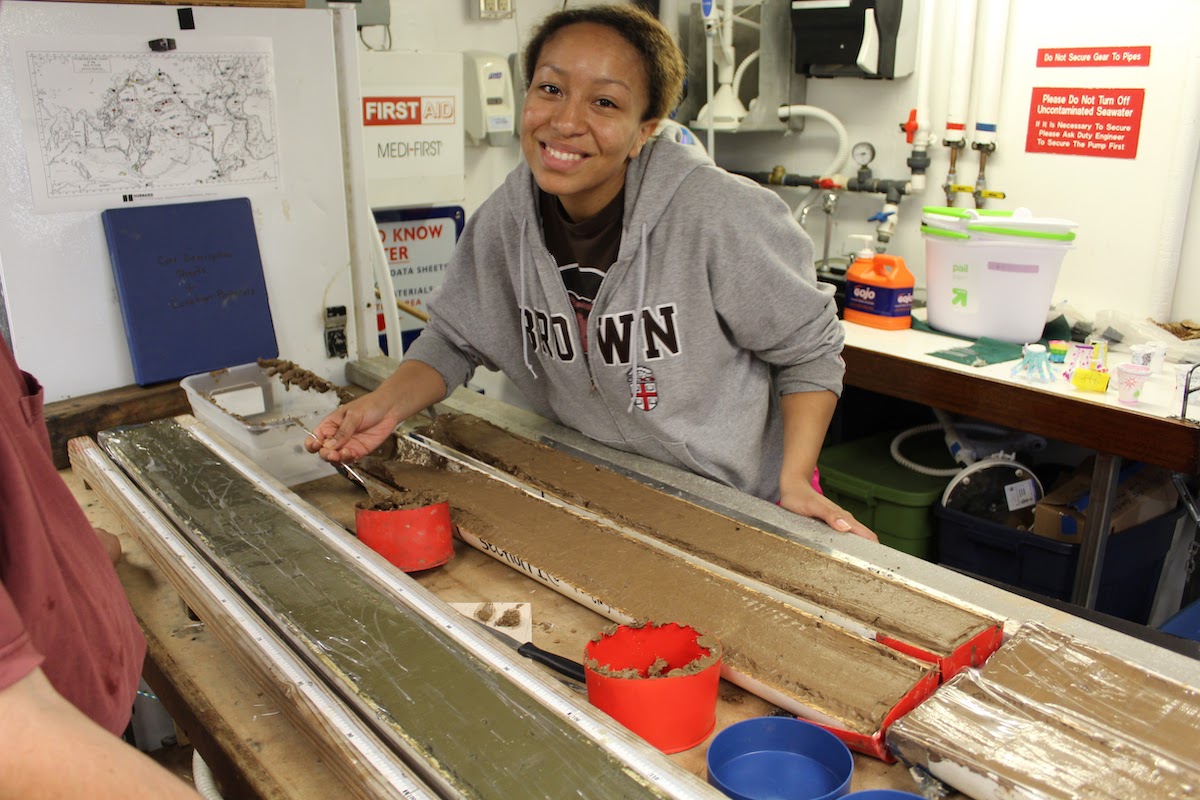
Postdoctoral Research At A&M
Bryant is one of the first Texas A&M College of Geosciences Future Faculty (GFF) Postdoctoral Fellowships, working with Dr. Christina Belanger in the Department of Geology and Geophysics.
Bryant was drawn to Texas A&M by the mix of different paleoceanography research topics the College engages in and International Ocean Discovery Program (IODP).
“I was especially excited to work with my advisor, Dr. Christina Belanger, because she has expertise in paleoecology and applies it to modern and relevant topics like understanding ocean hypoxia.” Bryant said. “Individual fossils can tell us a lot, but aggregating that data into big data sets facilitates the identification of bigger ecological trends. I also like to consider how geochemical records can give a broader paleoenvironmental context. So I am really interested in building integrated microfossil and geochemical datasets for the application of quantitative paleoecological methods.
I recently submitted my first first-authored paper and it really exemplifies how integrating geochemical and microfossil records can tell us a lot about paleoenvironments. One of the big conclusions is that benthic foraminifera are not always an indicator of a well oxygenated seafloor. Some forams are okay with low oxygen conditions and looking at the fossils with the geochemistry really revealed that. These results have inspired my next project. I am wondering how these forams cope with low oxygen, so this was the inspiration for designing 3 undergraduate research projects.”
Bryant is working with Belanger to use data science to compile multi-proxy datasets for analyzing paleoclimate systems and understanding ancient low oxygen environments.
“There is already a lot published on foram fossil occurrences, and there are a lot of geochemical records, especially from key IODP drilling sites. Something I learned from my graduate studies is how to use litho- and chemostratigraphy to correlate across sites. So I am creating data sets from already published studies so that I can apply quantitative ecological methods to analyze low oxygen environments across a basin instead of just at one site.”
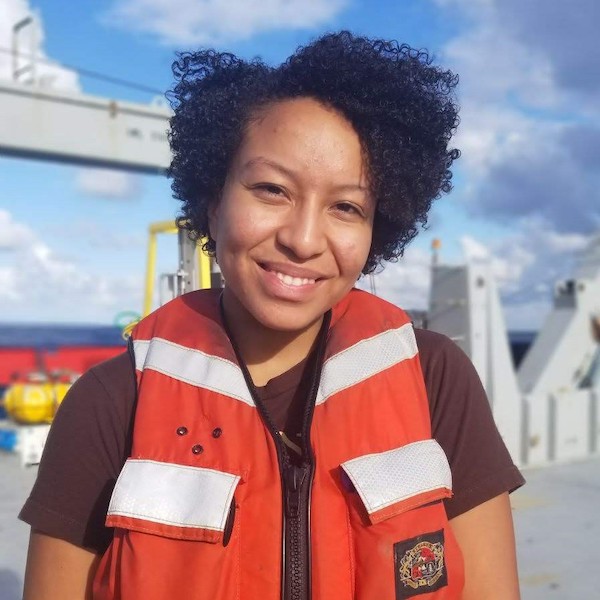
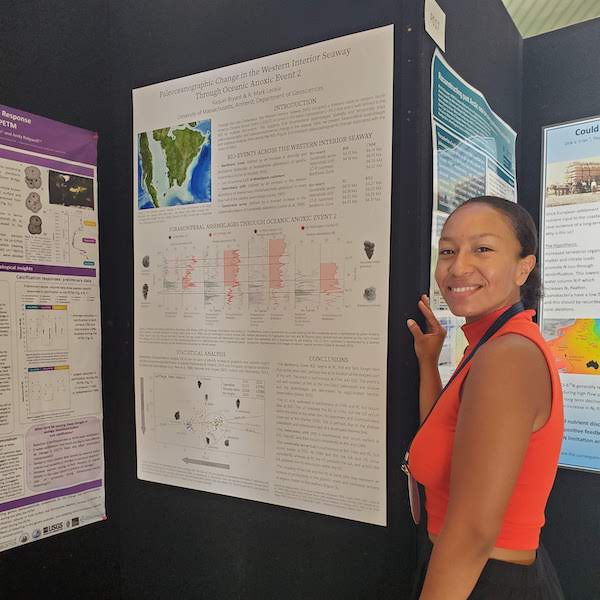
Early Inspirations In The Geosciences
Bryant spent much of her formative years as a child at a local science museum in West Hartford, Connecticut. She credits the early exposure to natural history and local geology as sparking an interest in her.
“I've always liked learning about ecosystems,” Bryant said. “When I was a kid, I spent a lot of time at science museums. There are pretty cool dinosaur fossils in the river valley in Connecticut and Massachusetts and I just remember thinking about how different this area where I live today must have been.”
The appeal of the geosciences continued with the influence of a high school science teacher who had a Ph.D. in geophysics. This teacher shared with her students all the opportunities for travel and field work.
“She would just tell us how she got to go to Greenland and Fiji and Australia just to do science and I had no idea you could do that,” Bryant said. “When I went to undergrad I wanted to study geology, because I thought that’d be cool, to get to go to different places. I had not really traveled at all before that.”
Bryant attended Brown University for her undergraduate degree and struggled the first semester with her first science class, she said. Fortunately, Bryant had a mentor, a faculty member at Brown, that had also struggled initially in university and encouraged her to persevere. Bryant took an Earth Systems History course during her second semester, and that was when things started to click.
“I thought, I don't think I can major in this, I need to change my major, this is not what I want to do,” Bryant said. “And then it actually switched to where I was thinking about soft rock stuff and fossils and especially climate proxies and I knew, yes, this is what I want to study!”
Understanding the interconnectedness of life, the oceans, and climate system excited Bryant and inspired her to continue pursuing a career in the geosciences.
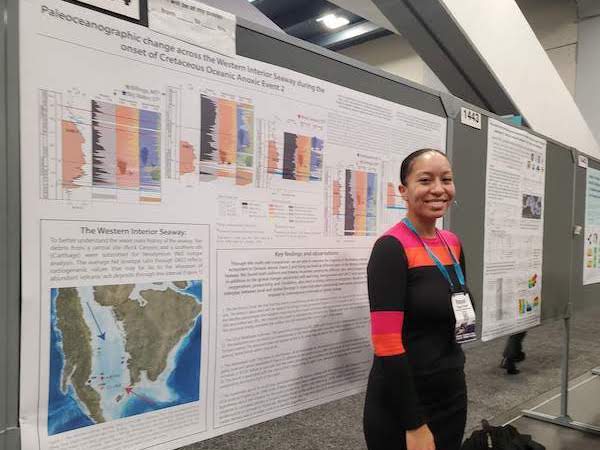
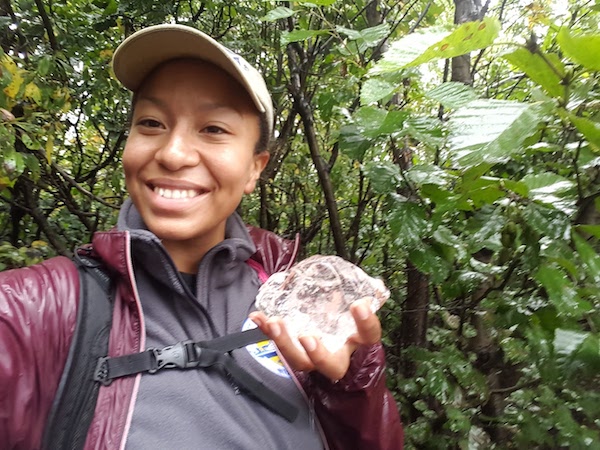
Research Opportunity Building Blocks
As an undergraduate student Bryant wasn’t sure what specific research topics appealed to her, so she cast a wide net and reached out to faculty and post-doctoral researchers. By being open and interested in many interdisciplinary science topics, Bryant became involved in undergraduate research using stable isotopes with the Archeology Department.
In addition, she was encouraged to apply to a National Science Foundation (NSF) Research Experiences for Undergraduates (REUs) program. Bryant’s first REU was at the Department of Paleobiology in the Smithsonian Institution National Museum of Natural History.
During this time, she worked with museum curator Dr. Brian Huber to revise biostratigraphy and evaluate the preservation of microfossil assemblages from the Agulhas and Naturaliste Plateaus.
“Ever since working with foraminifera, I became convinced that they are the coolest organisms and the Createcous ones are the most interesting,” Bryant said.
The following year, Bryant participated in a second REU at Scripps Institution of Oceanography. During this time, she created a high resolution record of ichthyoliths, which are essentially fossil fish teeth. “It was fun gaining experience with a more unconventional type of microfossil!”
Upon finishing her undergraduate degree, Bryant started a PhD at University of Massachusetts Amherst, working with Dr. Mark Leckie. Her research looked at foraminifera from the Western Interior Seaway.
“Most people like to focus on just one foram type, the ones that live in the upper water column or the ones that life on the seafloor. But I focused on the full foram assemblage for my dissertation,” Bryant said. “Which was cool but also challenging. It made me become more interested in geochemistry because I wanted to have environmental context for the forams I was observing in order to connect what the fossils from the top and bottom of the water column were telling me.”
During this time she earned two key fellowships, the Randolph & Cecile Bromery Graduate Fellowship, and the NSF Graduate Research Fellowship.
“I've been obsessed with the idea of being a lifelong learner and being able to mentor people and educate them and I found research to be a great vehicle to drive that.”
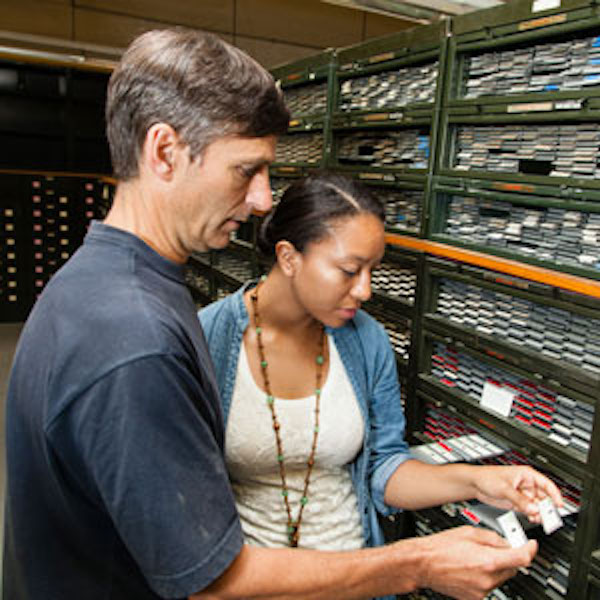

Barriers In Science
Bryant was first made aware of racial disparities in the sciences in middle school when a teacher spoke about the racial achievement gap. It was a deeply discouraging experience that made her question if she even belonged in science, Bryant said.
“I remember thinking, is there even a point in me trying in school, is there even a point in me trying in science, which I started liking around that same time,” Bryant said. “It always stuck in my head, whenever I would get the highest grade, or get into a competitive class. I would just think in the back of my head, I'm not supposed to be doing this, I'm not supposed to be here. I felt that all the time, I was always on edge.”
Bryant continued to deal with racism in her educational environment in high school. She recounts how even though she attended a fairly diverse high school, she was often the only student of color in her honors and AP STEM classes. “Back then, I didn't really have any tools to interact with my experiences. But, because of them, it's been a constant in my mind, the idea of science and the idea of systemic racism. There has never been a time when those things were different for me.”
During her undergraduate degree, she noticed that the geosciences field as a whole was disproportionately white. Bryant credits the support of student organizations that made it acceptable to embrace multiple identities in science. “This was the first time I was seeing that if you don't feel comfortable in your academic space, there are ways to support yourself. All of that was so affirming. Even though there was still the whiteness problem in geology, at least now I’m gaining tools to interact with it.”
“I knew I belonged in the geosciences, simply because I wanted to study geoscience,” Bryant said. “So now, I try to see the barriers as opportunities to first, refine my skills in overcoming them, and second, to give advice to someone else down the line as they may encounter those same barriers.”
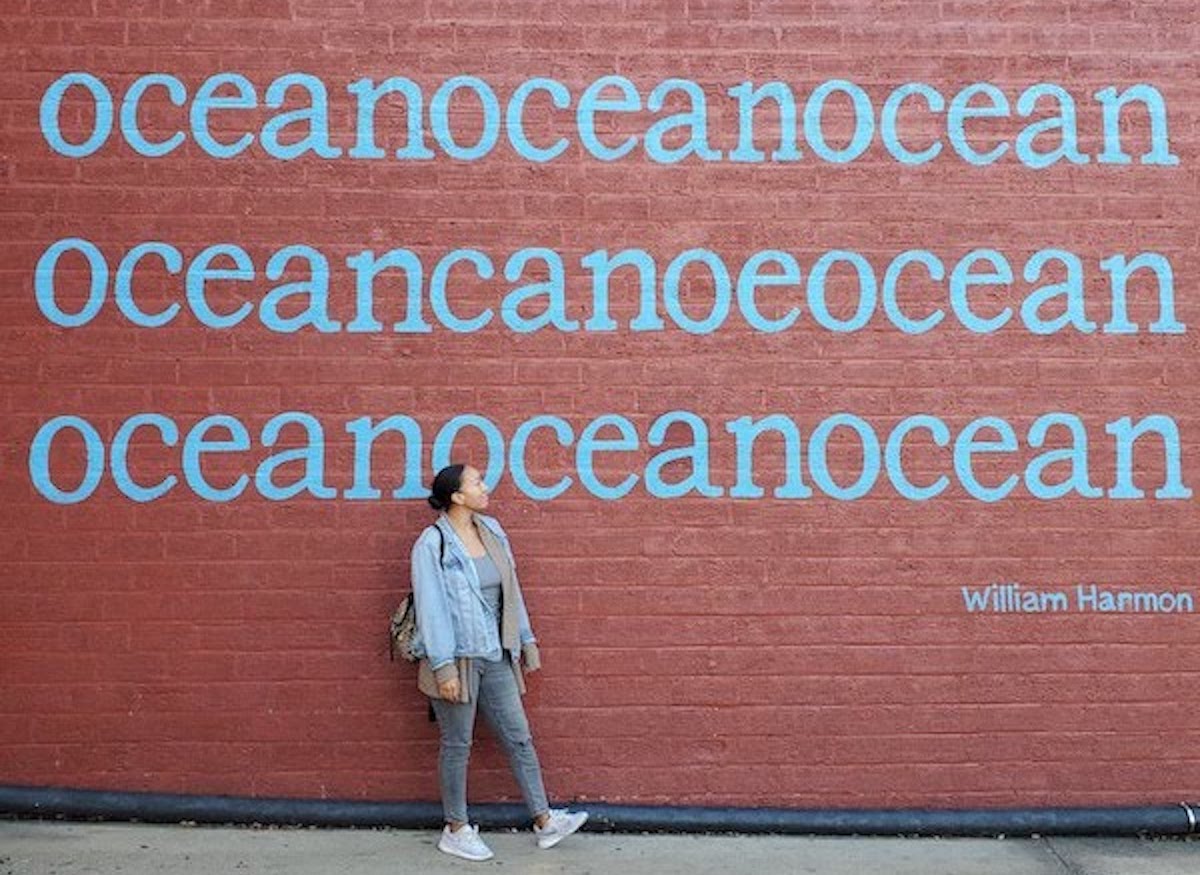
Inspired By Bromery
In graduate school, Bryant found a key inspirational figure, Dr. Randolph “Bill” Bromery. Bromery was the first Black Chancellor of UMass Amherst, and left an endowment, the Randolph and Cecile Bromery Graduate Fellowship, that supports students of color doing research in the UMass Department of Geosciences. Bryant received this fellowship for the first two years of her Ph.D. program.
“I took the Bromery family’s generosity very seriously, and I wanted to learn everything about him because he is a famous Black geologist and yet I knew nothing about him before getting the fellowship,” Bryant said. “One of the first things I learned about him was he served as a Tuskegee Airman, like my grandfather!”
Bromery used that experience in his research; when he returned from war, he saw that the USGS was recruiting geologists that knew how to fly planes. He became part of the first cohort of USGS airborne geophysists and helped found a whole new field.
“That is how his geoscience career started, by using another skill to make his science even better,” Bryant said.
Bromery was hired as a faculty member at UMass Amherst, authored over 100 journal articles, and mentored numerous Black students in geosciences and beyond.
“It was really affirming to find an example of someone I could look up to, because it's not necessarily what I see,” Bryant said. “I don't see many Black geoscience faculty, and I definitely don't see faculty doing what Bromery was doing. He was just as committed to broadening participation as he was to his research, and approached both with incredible rigor that led him to be very successful in both endeavours.”
Bromery went on to become the Chancellor of the University of Massachusetts and President of the Geological Society of America. He was instrumental in the effort to secure the W. E. B. Du Bois papers for UMass, making it a hub for Black scholarship and study.
“Bromery is very important to me because, as a paleoscientist I am always looking to the past to inform the present and future” Bryant said. “Seeing his story and learning more about his life really made me feel that what I'm doing could be the right path. Just because it's not something I see examples of right now, doesn't mean it's not a valid way to be a scientist .”
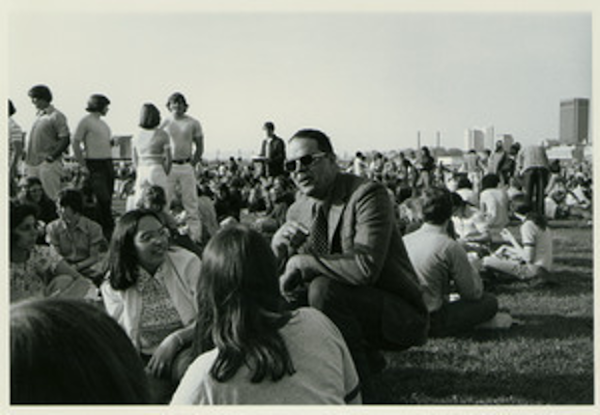
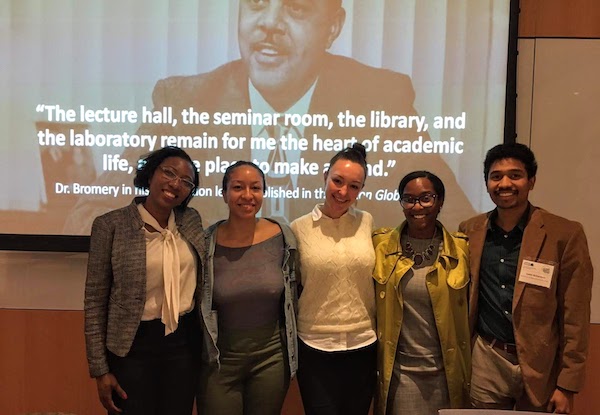
Building Supportive Communities In Academia
Another component of Bryant's success and resilience in academia is her understanding that she needs to find and build communities inside and outside of her academic spaces.
As an undergrad at Brown, she helped develop an independent study course, Race and Gender in the Scientific Community. The course took an interdisciplinary approach to understanding why there is underrepresentation in STEM. They had readings and invited speakers ranging from history, sociology, psychology and education. “I was learning about these phenomena that were going to start controlling my life once I got into grad school,” Bryant said. “By the time I got to UMass, I knew what I needed to invest in my own resilience and success in grad school.”
While in graduate school, Bryant worked with fellow graduate students to found the BRiDGE Lecture Series. By working with other graduate student groups in other departments, they were able to build their graduate student community and solve problems in diversity, equity, and inclusion within their university.
“We designed the lecture series that we had always wanted to see in academia,” Bryant said. “My favorite part about BRiDGE were the grad student lunches, because it would be a space where especially students of color could see themselves in the BRiDGE Scholars.”
Additionally, Bryant served as co-chair of the #Safeatwork Campaign, a part of a student organization called Graduate Women in STEM (GWIS). Through the campaign, she advocated for graduate students navigating experiences with sexual violence in academia and raised awareness to sexual violence in STEM academia.
“It was inspiring because I was involved with a team where we knew we couldn’t be quiet anymore,” Bryant said. “As a women in science organization, we felt we were the first line of defense for students who are experiencing harm and violence in their STEM environments. The campaign was designed to frame the issue of sexual violence as a workplace safety issue. If you are an abuser of your students, you're out of compliance.”
All of these experiences helped shape Bryant into the well-rounded, dynamic scientist she is today and inspired her next chapter, her post-doctoral studies at Texas A&M.
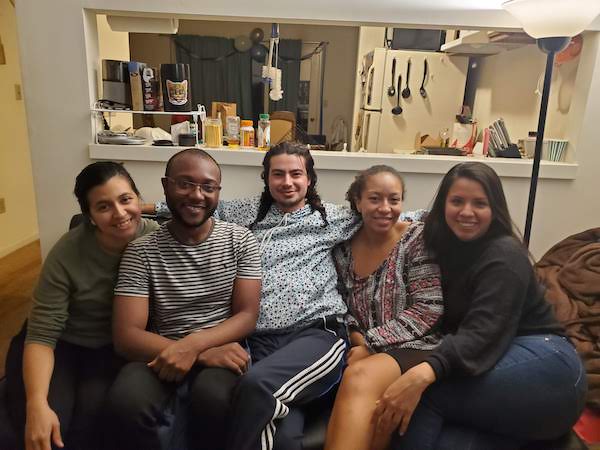
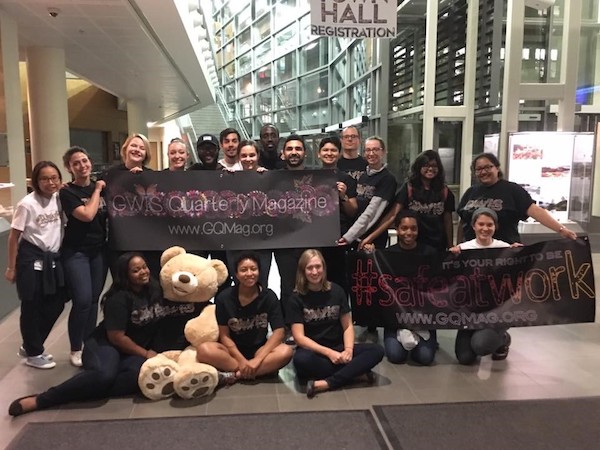
Leading The Next Generation Of Geoscience Leaders
In addition to her current paleoclimate and geochemistry research, Bryant is also focused on developing the next generation of geoscience leaders.
This past Fall, Bryant co-led the Geological Society of America (GSA) 2020 Online Connects Pardee Symposium: The Next Generation of Geoscience Leaders: Strategies for Excellence in Diversity and Inclusion.
The symposium provided a collaborative space where participants worked together to develop solutions that address justice, equity, diversity, and inclusion (JEDI) challenges specific to their geoscience community. The goal was to empower participants to organize and lead initiatives by equipping them with a network of support, an action plan, and tools and strategies for overcoming obstacles.
After the Pardee Symposium success, Bryant is looking to develop the next generation of geoscience leaders, and build strategic relationships inside and outside of traditional academia.
“It’s coalition building, it's brave space, it's challenging space, but it doesn't really exist yet,” Bryant said. “I'm still dreaming it up. I think the Pardee Symposium was a big first step to show people what it would mean to be a part of the next generation of leaders.”
Bryant credits the power of key transformative experiences throughout her undergraduate and graduate school experiences, and seeks to bring those positive experiences to others. Bryant is also a Principal Investigator on the NSF Collaborative Research grant, Alliance-Building Offshore to Achieve Resilience and Diversity (All-ABOARD). This award builds on her previous experiences as a mentor and instructor with another NSF program, Science, Technology, Engineering and Math Student Experiences Aboard Ships (STEM SEAS)
Bryant served as a graduate student mentor and instructor for the program, and mentored over 28 undergraduates during her years with the program. “It showed me how important near-peer-mentors are for students, especially students from marginalized communities because you already are feeling out of place,” Bryant said. “ It's not an easy leap to them ask a professor for help.“
Bryant built on what she learned from participating in STEM SEAS to envision All-ABOARD.
“Going on research vessels has been demonstrated to be a transformative experience, it can change the way you think about yourself and see yourself as a scientist,” Bryant said. “With All-ABOARD, we are taking that and adding intergenerational teams so that you are having this experience across a mentorship spectrum.”
Bryant is working with the other co-PIs, Dr. Benjamin Keisling and Sharon Cooper at Lamont-Doherty Earth Observatory and Dr. Brian Chad Starks.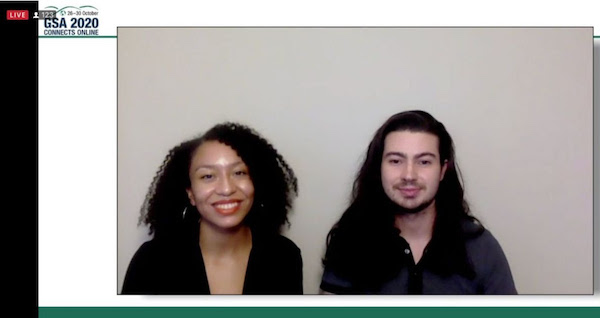
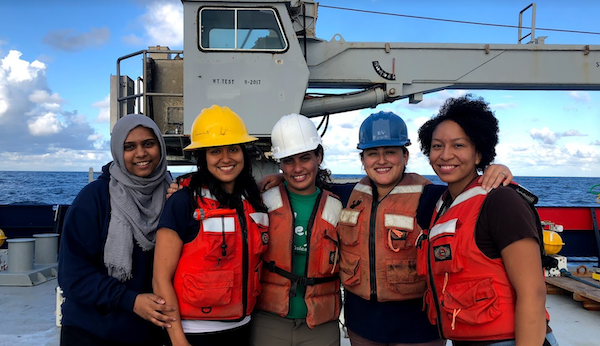
Looking Forward
In Spring 2021, Bryant co-taught GEOL 450 Geology Senior Project with Dr. Belanger.
“This is a win-win-win,” Bryant said. The undergraduate students worked all semester to build new morphological data sets based on samples from one of Bryant’s dissertation chapters. “So I had a way to test some of the ideas in my first paper, and the students got valuable research experience. And, I got to see, well, 'zoom' with a group of people, regularly, which was awesome because being a postdoc can get pretty lonely.
This summer I will be working on writing up a paper based on the preliminary studies the students conducted. Not only did they find super cool results, their results fit in really well with some of my hypotheses!”
Bryant’s passion for ancient geologic systems and inclusive geosciences stems from her appreciation of the whole earth system. “People are on the earth, so they are also a part of the earth system,” Bryant said. “We have to care about understanding both the earth and the people who live here.”
You can follow Dr. Bryant on Twitter at @foramsraqu or visit her personal website at https://www.raquelbryant.com.
By Ali Snell

